-
26 Building Webster’s Lab V2 – Advice, Conclusions, and Lessons Learned
[Updated 8-Nov-2021]
If you have followed this series, we have learned a lot together. I started working on this series on 4-Apr-2021 and finished this, the last article, on 28-Jun-2021. Then, from 27-Aug-2021 through 29-Aug-2021, I updated all the articles for CVAD 2106 and Horizon 8 2106. I spent 706 hours learning, building, testing, playing around, destroying everything, rebuilding, retesting, playing around some more, writing, editing, and uploading the 1,334 pages and 1,633 screenshots to WordPress.
It was much effort, but it was also a lot of fun and an excellent learning experience.
Of all the experts I know, I do not know anyone who gets everything right the first time. That is why we have labs. That is why we test, mess up, start over, and keep at it until we understand and explain the process to others.
Unfortunately, I have met numerous people in IT who do not care to do any learning or testing outside of work hours. That is sad. If you desire to grow in your IT career, I believe you must spend your own time improving yourself, your knowledge, and your skills.
Advice
- Always learn.
- Always improve yourself.
- Be a better person today than you were yesterday.
- Learn good habits in the lab. What you do in practice becomes what you do in real life.
- Learn to document your lab. Documenting your work and configurations is an excellent habit to learn. I have never known anyone who complained about having too much documentation.
- Learn to document the changes you make in the lab. While you may not need a formal change control process for your lab, learning to document changes BEFORE you make them is an excellent habit to learn. Here are some basic examples of a change control document.
- Reason for the change
- What is wrong in the current environment that requires the change
- What is the change
- What is the impact of the change (i.e., all servers require a restart)
- Validation of change
- Is there a rollback plan
- Do not practice stuff in the lab until you get it right once. Practice until you cannot possibly get it wrong.
- Remember your physical health. We I.T. people have a reputation for sitting on our rear ends all day long. Get up, get some exercise, even if it is just walking up and down the stairs. Move.
- Remember your physical health #2. We I.T. people have a reputation for eating junk food and rarely eating much if any, healthy food.
- Remember your mental health. We I.T. people have a reputation as loners and loving isolation. Have friends. Spend time with your friends. TALK to your friends.
- Remember your mental health #2. We I.T. people have stressful jobs. Keeping stress bottled up inside can lead to bad heart health and bad brain health. It is OK not to be or feel OK. TALK to someone.
- Have a hobby that does not involve computers or technology. Take a mental break from computers and technology.
- Don’t be afraid to make mistakes. Preferably make them in your lab and not on the job or at a customer site.
- Learn to automate. Now that you know the basics of creating hosts, servers, virtual machines, virtual networks, virtual storage, and much more, you do not want to do this manually at scale.
- Automation comes in many flavors. It would be best to read about software like Ansible, Chef, Jenkins, Puppet, and others. Many vendors offer commercial automation software—for example, Microsoft System Center Configuration Manager and Microsoft Deployment Toolkit.
- Cloud is the future but is not cheap to use in a lab unless you become a Microsoft Most Valuable Professional (MVP) or get access to credits for Azure, AWS, Google Cloud, and other Cloud providers.
- Start your lab small. You don’t need to go into thousands of Dollars/Euros/Pounds/Rupees of debt to build a lab. My first lab was an old computer built from many other computer parts thrown away by friends and customers. Back in 1984, it was amazing what you could do in 1 MB of RAM, a 30 MB hard drive, and a 12″ monitor at an incredible 80 characters by 25 lines display.
- As we did in the article series, always think about security. That is why I left the Windows Firewall and Windows Defender enabled on every computer. Learn about TCP/UDP, Ports, Inbound and Outbound network traffic.
- As we did in the article series, always do one thing at a time. Take your time, Be patient. If you make five changes at once and then test and the test fails, which of the five changes (or combination of the changes) caused the failure?
- There is no one right way to do anything in technology. This is the old cliché of asking 25 consultants how to automate a process or design a Citrix/Microsoft/VMware infrastructure, and you receive 25 different proposals/viewpoints/opinions. And the 25 consultants tell you why the other 24 consultants are wrong or idiots.
- Don’t neglect people skills. Soft skills are what helps you succeed in any career. Check out this video by the fine folks at Thrive-IT. Elevating Your Soft Skills.
I asked my fellow CTPs and vExperts what advice they would like to offer you.
CTPs:
Benjamin Crill:
Always be willing to TRY a solution. You don’t know that it is bad/won’t work/not what you want/etc until you actually try something.
Manuel Winkel:
Work in the test environment according to the approach – trial and error – everything is possible and can be tested if it is not productive ^^
Guy Leech:
If you’ve got RAID arrays for some resilience against disk failure, have a hot spare where possible, and if not, at least set up alerting so you get notified on a disk failure.
Make sure you size a UPS correctly, although mine mainly protects against occasional Residual Current Device (RCD) trips, so it only needs to provide a few minutes of power. [Webster. Check the detailed explanation of RCD at Site issues with Earth leakage.
Julian Mooren:
1.) Do small steps. Especially when automating because it can get quite overwhelming
2.) Maybe build the lab with a good friend or colleague. Together is better.
3.) Invest time in yourself = Better Skills and career opportunities
4.) You don’t need to have a 4000$ Home lab setup. Set yourself a budget and start with a tiny machine and build component by component. If you are still enjoying it after some months > upgrade.
5.) Watch your Credit Card bill when building your lab on Azure or another public cloud.
6.) Don’t be afraid to try/learn something completely new. Play with the solution and make yourself an impression of it. Even if it is a product from the competitor
Mads B. Petersen:
Controlling access to management, think jump host, MFA for windows logon and such, which I see many companies don’t do very well.
Leee Jeffries:
Invest in yourself, get some hardware to play around with, work on the fundamentals, and focus on what interests you. You’ll be surprised about how quickly you learn when you’re keen to get started. Ask questions to your peers in the community; they are all friendly folks. Lastly, share what you know.
vExperts:
Stephen Jesse:
“don’t be afraid to experiment,” meaning do dumb stuff here not in production, so you know why you don’t do it
Pawel Kubik:
If I may, I would add just one thing, Always try to keep it simple.
Mike Martino:
Aim to be 1% better every day – small chunks of effort adds up. Especially working on things in your home lab and/or when learning and studying for a cert when there can be so much to do that you need to focus on little bits at a time to get through it.
Conclusions
No one is perfect.
Don’t be afraid to start your own blog and document your learning experiences. If you have questions, someone else is asking the same questions. When you figure it out, document what you learned, the learning process, and the lessons learned along the way (also known as, oops, I made a mistake, and I don’t want you to make the same mistake.).
Learning something new can be stressful, challenging, and frustrating. But it is rewarding when you figure the new stuff out and feel that sense of accomplishment.
Lessons Learned
I already knew it, but writing detailed how-to articles with hundreds of screenshots is very time-consuming.
If you followed the series and built each VM as documented, you notice that I manually created each server certificate. Leee Jeffries, who reviewed almost every article, suggested another way to do this using a GPO.
Here are the email contents Leee sent.
<quote>
Here are the steps to enable your computer certificate to be replaced with a new one that Auto-Enrolls.
- Create a new template (I followed your instructions from your blog)
- Change the Superseded Templates and add the “Computer Template”
- Change the Security to allow Domain Computers to Enroll
- Under the main Certificate Authority, Certificate Template, Remove the “Computer” template.
One side note – I do not remove the “Client Authentication” from my certificates as I want the machines to use their cert in client auth.
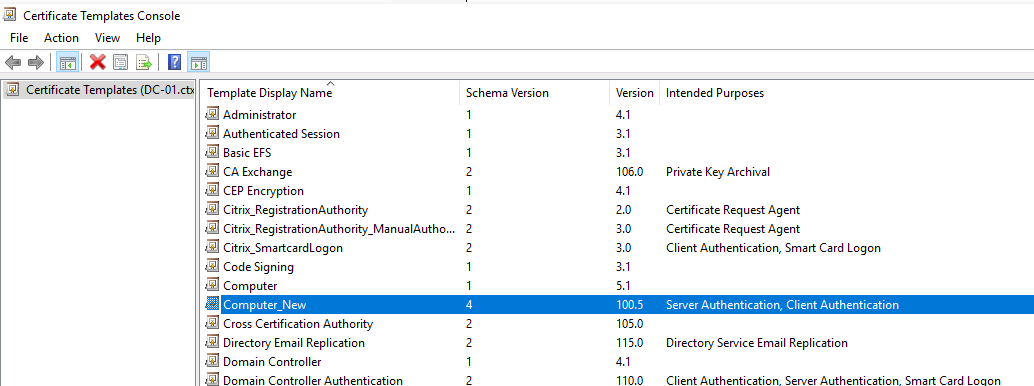
Figure 1 My new template
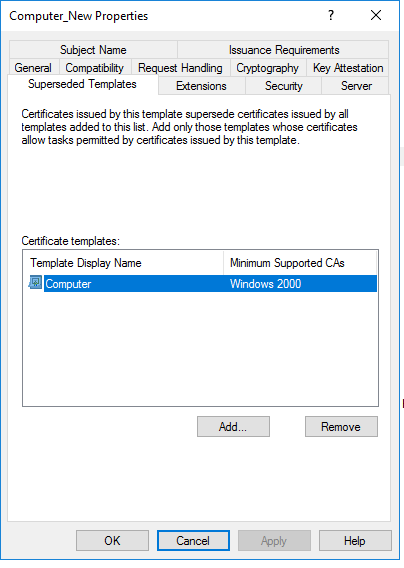
Figure 2 Added the old Computer template to be superseded with this one
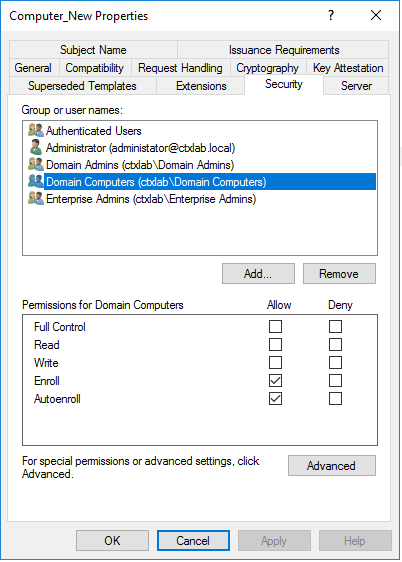
Figure 3 Amended the Domain Computers Object to allow AutoEnroll
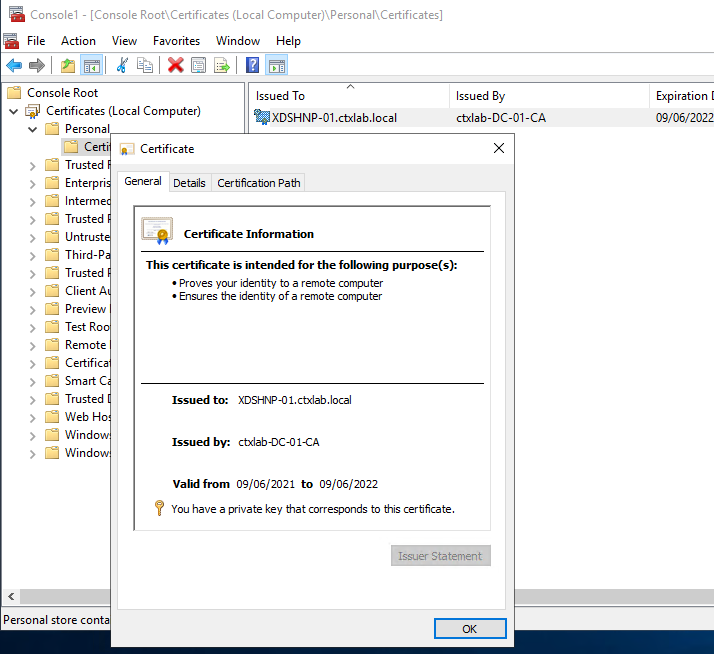
Figure 4 Before a GPUpdate – showing only one-year validity
Then:
After a GPUPdate, showing two-year validity and the amended certificate template.
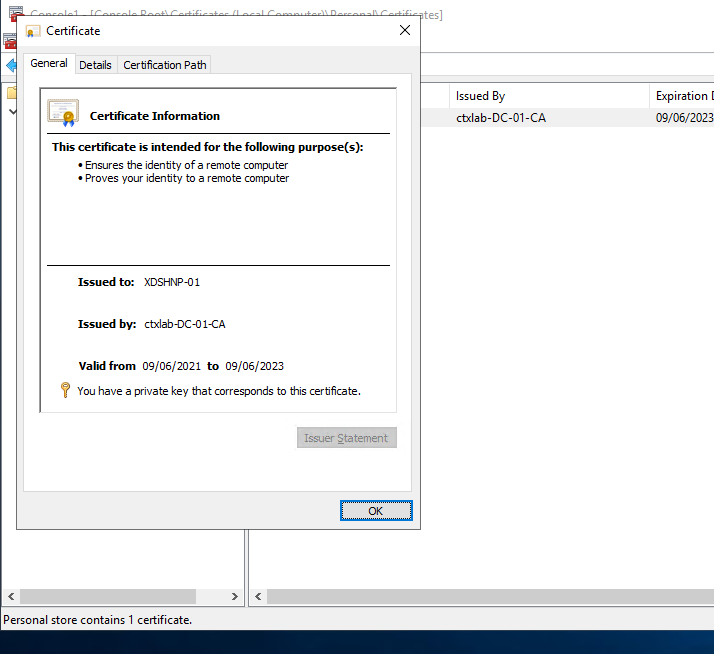
Figure 5 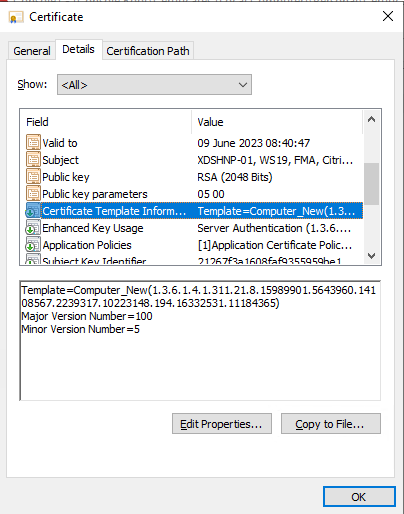
Figure 6 To confirm the GPO Config:
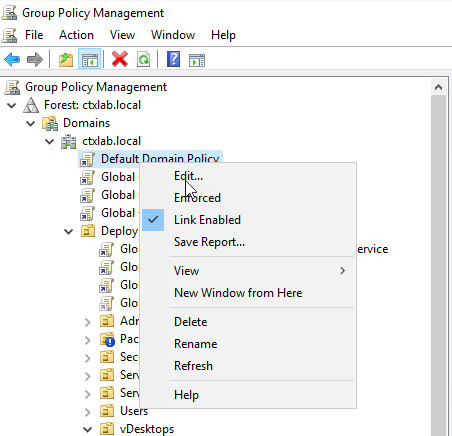
Figure 7 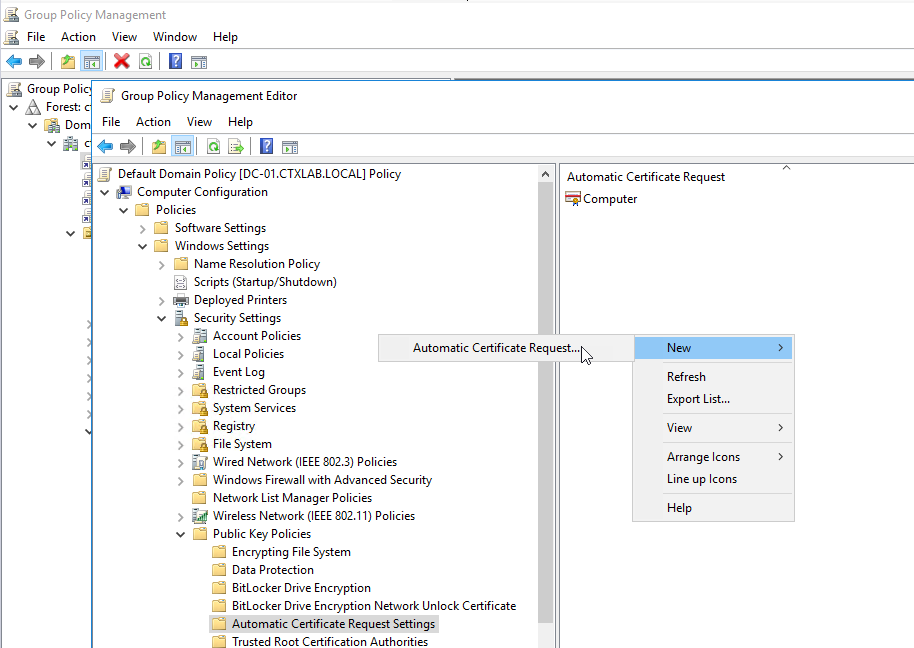
Figure 8 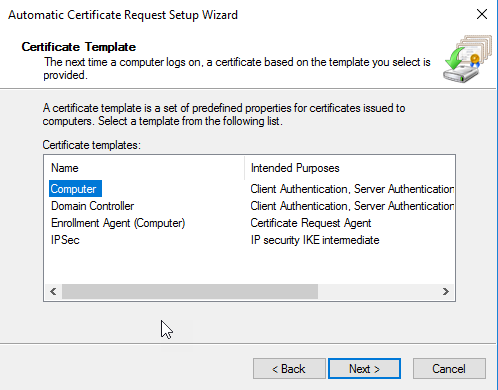
Figure 9 </quote>
I asked my primary AD/Certificate Authority mentor about the difference between what he taught me and what Leee suggested. He stated:
“The current mechanism allows for batch creation and generation of certificates, including for machines that are off the domain. It also generates a more secure certificate.”
Some Certificate Issues/Considerations:
[1] automatically requesting certificates via GPO is easy – and there is nothing wrong with that.
[2] the default Computer/Machine and the various Domain Controller/Kerberos/etc. templates have lots of capabilities. In a secure environment, they may have too many. For example, they have both Extended Key Usages (EKUs) for “Server Authentication” and “Client Authentication”. Arguably, they don’t need “Client Authentication”, and this can – in certain circumstances – cause major security issues. Supply in the Request Shenanigans
[3] In my clients, many devices aren’t members of the domain. Using INF request files works for all of them. GPO doesn’t.
[4] In my clients, some certificates need different lifetimes than other certificates. Using a GPO makes that slightly more complicated. Using INF request files makes it easy. (This also applies to many other certificate attributes.)
[5] The default installation of Certificate Services is not particularly secure. Locking down CS isn’t difficult, but it requires more ongoing input from a CS admin. Certified Pre-Owned: Abusing Active Directory Certificate Services
Thank you for reading the series.
Up next, eventually, the Learning the Basics of VMware Horizon 8 series.
Webster






June 28, 2021
Blog